15+ Sample Workout Chart
-

Weekly Workout Chart
download now -
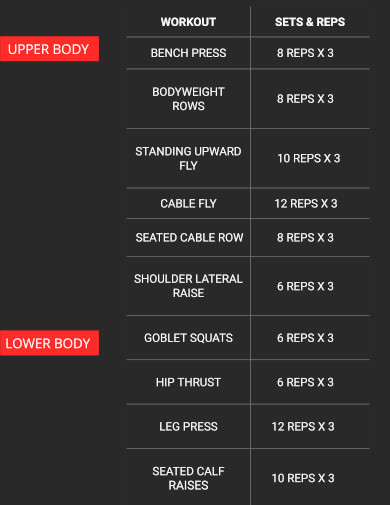
Gym Workout Chart
download now -

Monthly Workout Chart
download now -
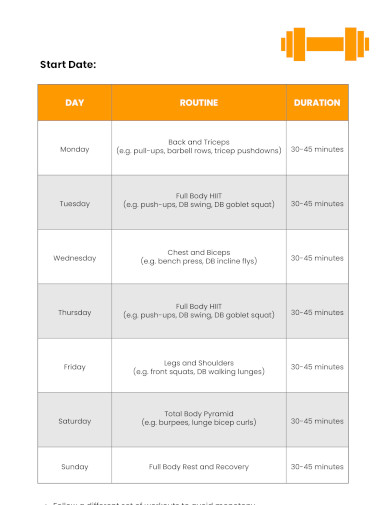
Daily Workout Chart
download now -
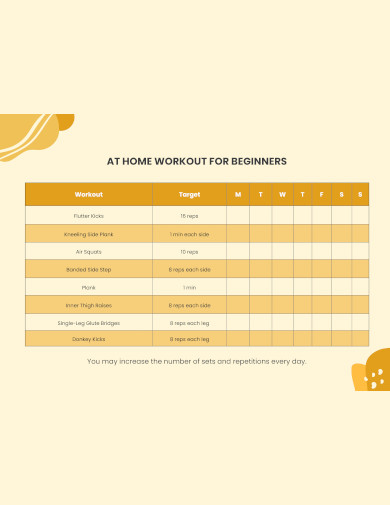
Body Workout Chart
download now -
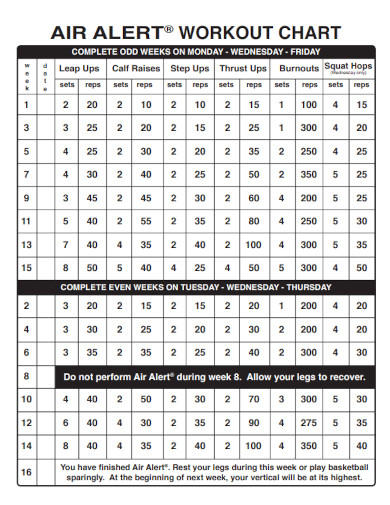
Sample Workout Chart
download now -
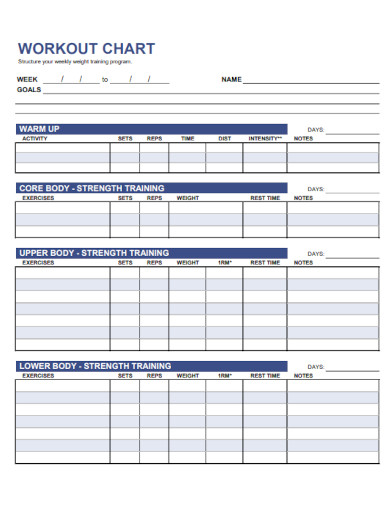
Printable Workout Chart
download now -
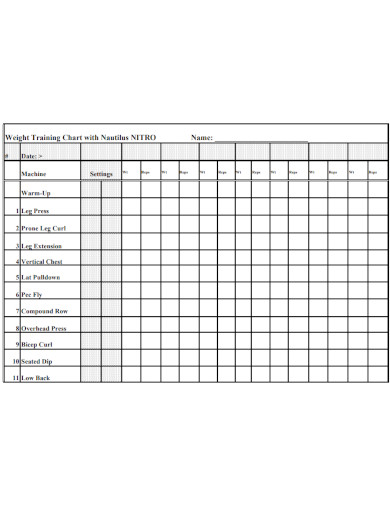
Workout Chart Example
download now -

Workout Chart Design
download now -

Professional Workout Chart
download now -

Simple Workout Chart
download now -
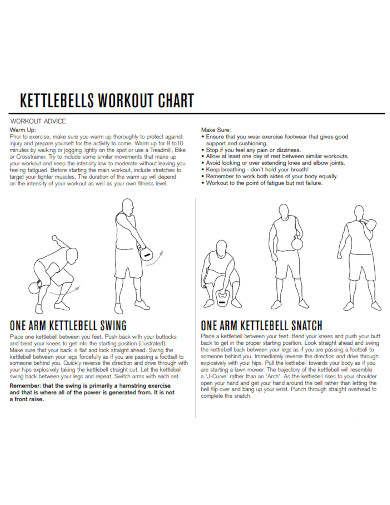
Draft Workout Chart
download now -
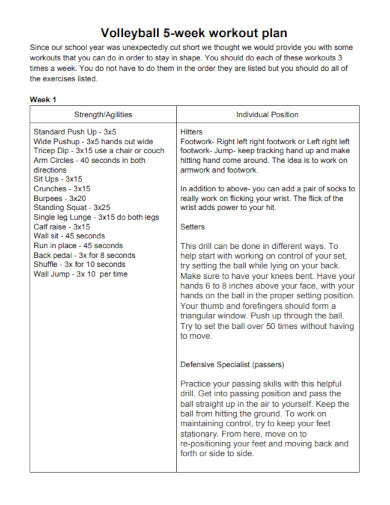
5-Week Workout Chart
download now -

9-Minute Strength Workout Chart
download now -
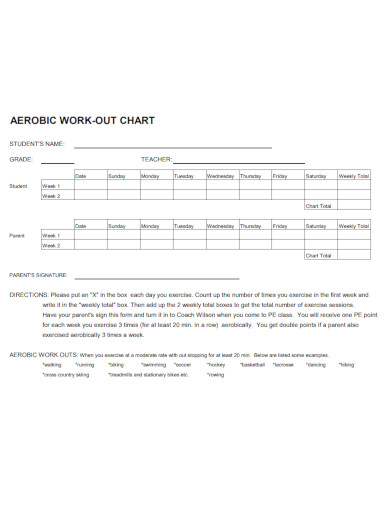
Student Workout Chart
download now -
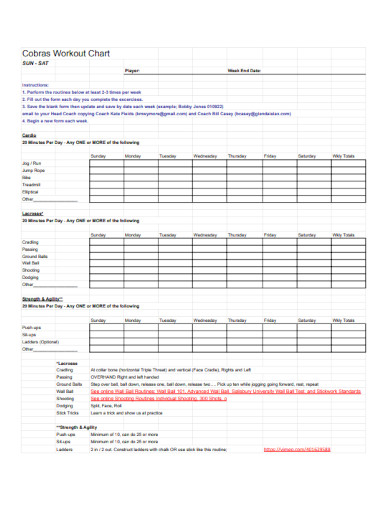
Cobras Workout Chart
download now
What Are Workouts?
As its name implies, a workout chart is intended to be used as a guide when performing various exercise routines. Typically, fitness goal chart examples include images and instructions for how to perform a particular exercise. Another form of exercise chart can be used to monitor a person’s daily exercise regimen. Different charts vary in content and presentation. Nonetheless, they benefit individuals who require guidance in maintaining a healthy body through exercise.
Benefits of Workout
Any movement that causes your muscles to contract and forces your body to expend calories is defined as exercise. There are numerous forms of physical activity, such as swimming, running, jogging, walking, and dancing. Physically and mentally, physical activity has been shown to have numerous health benefits. It may even extend your lifespan. Here are the leading physical and mental benefits of regular exercise.
Tips Before Working Out
Preparing your body and psyche before working out is essential to get the most out of your workout and lower the chance of harm. Consider the following guidelines before beginning your exercise:
1. Stay Hydrated
Consume water before exercise to adequately hydrate your body. Dehydration can decrease efficacy and increase fatigue during exercise. Consume a light, balanced entrée or beverage containing carbohydrates for energy and protein for muscle repair and growth. As they may cause discomfort, avoiding eating heavy or fatty foods immediately before exercise is best.
2. Establish Realistic Objectives
Have a defined exercise regimen. To maintain focus and motivation throughout the session, set attainable sample goals. Attention must be paid to any aches, pains, or distress. Before continuing the workout, it is recommended to address any discomfort to avoid aggravating potential injuries. Take a moment to review the proper form or technique before attempting new exercises or routines. Using adequate form reduces injury risk and effectively targets the intended muscle groups.
3. Be Aware of Your Respiration
Be conscious of your respiration throughout your exercise. Deep, rhythmic breathing will oxygenate your musculature and preserve your vitality. If you enjoy listening to music or podcasts, create a playlist or choose content that will keep you motivated and engaged during your exercise. If you exercise outdoors alone, you should tell someone of your route and estimated return time for safety reasons. Before commencing your workout, you must eliminate all mental distractions. Concentrate on the movements and exercises you will perform. Static stretching before exercise can temporarily impair your muscles. Choose dynamic stretches that prepare the muscles for forthcoming activities. Static stretching before exercise can temporarily impair your muscles. Choose emotional times that train the muscles for future movements.
How to Create Your Diet Plan
As previously stated, fitness can only be achieved with a correct diet. No matter how well you exercise, you can only attain your goal with a proper diet plan. Curious about how to develop such a diet plan? Here are some steps to creating a perfect diet plan to attain your fitness objective.
1. Track Your Daily Dietary Routine
We frequently do not consider it and embark on a diet. It is unhealthful. Because it is impossible to alter abruptly, therefore, record your daily food intake. Record what you consume every day. Do this for three days, and on the fourth day, review your file notes. Examine your dietary habits. Now, make a grocery list of healthy and unhealthy foods. Cross hazardous foods off your list. This will allow you to recognize your unhealthy eating habits and motivate you to achieve your fitness plan by consuming healthy food.
2. Enroll in the Online Masterclass in Nutrition
Now you understand what is making you sick. You can cease consuming them, but they are insufficient. You must adhere to an ideal diet to achieve your fitness objective. Eliminate processed foods from your diet. Include as much unprocessed food as feasible. The unprocessed food maintains its nutritional value. Therefore, the more unprocessed foods you consume, the faster you will reach your objective. You can include salad, fruits, fruit salad, unprocessed vegetables, etc., on your list of unprocessed foods. At least one-third of your diet should consist of unprocessed foods.
3. Include Fresh Vegetables and Fruits
High nutritional value can be found in fresh fruits and vegetables. On your list, be sure to include fresh fruits and veggies. Make sure to have fresh fruits and vegetables, and check those foods’ vitamins and minerals content. Such a diet rich in fresh foods can boost your immune system and maintain your body’s healthy. Avoid supplemental sugar. Keep it at the lowest amount possible if you do not have any diabetics. As previously said, you must avoid processed foods as much as you can. Artificial sugar is on the list, so stay away from it or use it only in moderation if you must. A day’s worth of fake sugar requires no more than one scoop.
4. Remain Upbeat and Steadfast
We frequently become frustrated and discouraged when we cannot attain our objective. When it occurs, we often begin to starve or consume significantly less. Such an action may yield speedier results, but it can negatively affect your health. Therefore, never, ever deprive to achieve your desired outcome. Remember that starvation is not the solution; grasping nutrition and the body’s metabolism is crucial. If you starve yourself, your body will never receive adequate nutrition; as a result, you will feel feeble and may develop severe health problems in the future. Therefore, never skip meals or starve yourself to achieve your objective, negatively impacting your health.
5. Control Your Brain
Occasionally, the intellect, not the stomach, is hungry. Therefore, we sometimes consume to satisfy our emotions. It typically occurs when individuals are sad and stressed. Without a doubt, these diets are unhealthy. Since it is not intended for the intestines, it will harm your health. Control your mind, and when you experience a craving for food, ask yourself if you are famished. If the answer is yes, you should only order or consume food; if the answer is to satisfy your brain, you should avoid it. This is how you should manage the emotion that causes you to overeat.
FAQs
What is the best workout schedule?
If you want to exercise five days per week and focus on both strength and cardiovascular fitness, you should perform three days of strength training schedule, two days of cardiovascular exercise, and two days of leisure. If you want to exercise four times per week, consider your goals: If you’re going to gain muscle, eliminate one cardio day.
Should I go to the gym daily?
A weekly day of rest is often recommended when designing a workout program, but you may occasionally experience the urge to exercise daily. Daily exercise is acceptable if you’re not pressing yourself too hard or becoming obsessed with it.
Is it good to exercise before bed?
Generally, exercising before nighttime has been discouraged. Exercising later in the day was believed to make it more challenging to fall slumber and enjoy a restful night’s sleep. However, recent research indicates moderate-intensity exercise will not affect sleep if completed at least one hour before bedtime.
With workout chart templates, one can quickly assess their body fitness and determine whether they have worked out sufficiently for the day. Each day, the user can review the exercises they’ve performed and, based on this information, can determine where they’ve fallen short in their workouts and how they can progress. Workout chart templates assist individuals in maintaining their fitness and health through regular exercises, and they can easily design and evaluate their goal chart according to the time and duration of the activity. These templates also include an age chart that helps individuals determine how to exercise based on their age.
